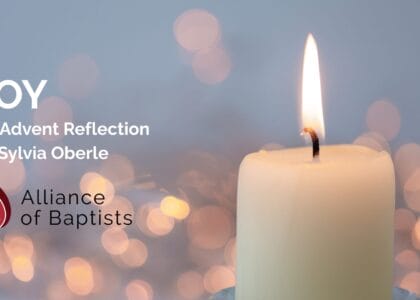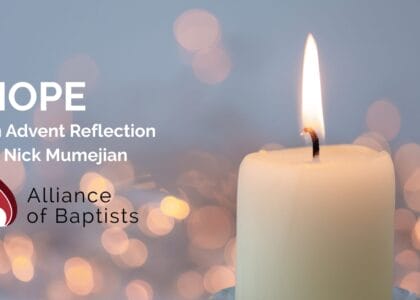By Amy Lewis
I am longing to be set free by the truth. Sly and overt intentions to erase our country’s history are spreading like toxic fertilizers. As false narratives swirl in our public and private conversations, museums have become spiritual public spaces of truth-telling. The Legacy Museum and the National Memorial for Peace and Justice in Montgomery, Alabama, are sacred places of personal and collective transformation in our country.
Bryan Stevenson founded a nonprofit civil rights law office in 1989, the Equal Justice Initiative (EJI). EJI has supported and sometimes exonerated people who face inhumane prison sentences, brought to light the terror of confinement in prisons, and made the public aware of racial bias woven into the criminal legal system. From decades of work, EJI was called to create the Legacy Museum, the National Memorial for Peace and Justice, and the Freedom Monument Sculpture Park in Montgomery. The three Legacy Sites are sacred spaces that are changing lives, narratives, and potentially culture.
Taking the pilgrimage from my home in Decatur, Georgia to be at the Legacy Sites with a group of people from the Alliance of Baptists felt like a spiritual pilgrimage I desire to experience again and again. On the first day we gathered for study and preparation with in-depth, compelling lectures and conversations led by Alliance staff, Rev. Dr. Alexis Tardy and Rev. Dr. Elijah Zehyoue. There was so much to think about, explore further, and continue to absorb over time. Thank you Alexis and Elijah for wading into the challenges of empire, organized abandonment, the technology of incarceration, and the wisdom of Prathia Hall, M. Shawn Copelan, and Delores Williams. Alexis reminded us that we are not called to safety, but we are called to witness.
On the second day we came together in three circles to set intentions for the day. Each circle was thoughtfully facilitated by two team members from the Radical Optimist Collective, a skilled team of professionals who work with groups that visit the Legacy Sites. Because the work and discipline of seeing the truth can be incredibly challenging, I was very thankful for the people around me in the museum. There were new and old Alliance friends, people I did not know, people living in Black bodies and people living in white bodies, and the museum staff who hold the space for those gathered to witness the historic and present truths of slavery in America.
With all of the support and community, there was also plenty of space and understanding for solitude and reflection. Options were available to shuttle or walk between sites. The day concluded with a gathering in the three circles. The Radical Optimist Collective facilitators guided us through a time of sharing experiences that came up during the day, followed by a series of questions that helped connect the Museum and Memorial to our faith, life, work, churches, and commitments in the days and years to come.
For someone who sometimes has a really hard time putting things into words, I feel called to spend more time testing out new narratives—in writing, art, and in conversation. Perhaps we can do this together, in a spirit of love and truth, allowing for mistakes, growth, self awareness, and genuine relationships alongside oops and ouches occasionally. We are called to speak up, speak out, find our voice, disrupt, and spread the truth in new narratives.
My takeaway was to journal more. So it was fun to be asked to write this blog! And it was a mindfulness bell for me to be true to the commitment I made to myself and to the work of ending white body supremacy. This was my third visit to the Museum and Memorial. There is always a new insight and new ways of understanding. During this visit two things stood out to me in the Museum—the impact of narrative and accountability.
One section in the Legacy Museum had a quote that emphasized the influence and power of words; “Slavery evolved. The enslavement of Black people in the U.S. lasted for more than two centuries and was justified by an elaborate narrative of racial hierarchy. This ideology has endured beyond the formal abolition of American Slavery.” (If you know who said this truth shown on the walls of this sacred space, please reach out and share with everyone so we can give credit). History proves that words and stories create beliefs and terrifying systems of racism that have stood the test of time. This truth calls us to get creative and bold and tell new stories and old stories.
For someone who sometimes has a really hard time putting things into words, I feel called to spend more time testing out new narratives—in writing, art, and in conversation. Perhaps we can do this together, in a spirit of love and truth, allowing for mistakes, growth, self awareness, and genuine relationships alongside oops and ouches occasionally. We are called to speak up, speak out, find our voice, disrupt, and spread the truth in new narratives.
Accountability was the second understanding that touched my soul in the Legacy Museum. (If you know who said this truth shown on the walls of this sacred space, please reach out and share with everyone so we can give credit). “Accountability would make a difference in the lives of black people.” Succinctly put. I appreciate so much how this line shines light on an obscure necessity—accountability of white-bodied people. I hope we will have more and more conversations about what it means to be accountable, to accept the charge of accountability for ourselves, our community, our white ancestors, and generations of white-bodied people to come. Could our acceptance of accountability make a difference in the lives of Black people? I believe accountability would lead to spiritual transformation in our lives as white-bodied people.
I hope we can continue to have robust conversations that lead to rituals and routines we can take to the streets that embody the act of witnessing our history, creating and amplifying new narratives, embodying accountability, and being in authentic relationships with our siblings living in Black, Brown, Asian, and Indigenous bodies.
For another time, I also have hope that through antiracism embodiment practices those of us living in white bodies can begin to notice what is happening in our own bodies regarding racism, which we so often ignore—both our bodies and racism. By witnessing our full selves, just as we are being called upon to witness our full history, perhaps the truth will begin to end white body supremacy. May it be so.

Amy Lewis facilitates Trauma Sensitive Yoga Sessions and partners with organizations and communities as a consultant and facilitator. A central part of her personal and professional growth, which greatly informs her work as a consultant, continues to be the development of personal and collective antiracism embodiment practices.





Recent Comments